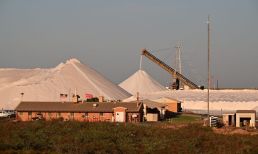It’s been a wild ride in 2020, and something of a strange one for 5G, which was the subject of an early conspiracy that blamed the technology for the global COVID-19 outbreak.
The rumor didn’t turn out to have much of a shelf life and more or less disappeared by summer, meaning it didn’t do much damage to the progress of the next-generation data network.
In fact, Cellwize Chief Operating Officer Dan Weil told PYMNTS that even COVID-19 itself didn’t do much to slow down 5G. In fact, it did a lot to dial up the pressure to advance the technology.
“In the telecom industry, what we saw from our customers — the network operators — wasn’t just that they were slowing down their 5G plans. They actually expedited them,” he said. “I think what we’ve seen through this pandemic is the importance of communication, especially with the changing patterns that have seen people shift online so much more. People have needed to work from home, go to school at home, shop from home. These things have all turned out to be essential, which has really pushed network operators into expediting some of their planning.”
It has also accelerated things up at Cellwize, a technology firm that leverages artificial intelligence (AI) tools and high-level automation technology to optimize networks and guarantee their consistent quality without lots of manual inputs. Weil said that’s increasingly critical as the world undergoes the great transformation toward 5G.
“It’s important to understand that 5G is not just another generation — it’s a very unique generation of network technology,” he said.
Advertisement: Scroll to Continue
As Weil pointed out, to get the 5G speeds and capabilities that the industry is talking about will require the deployment of network elements and numbers of sites “at least 10 times more than what was required for LTE or 4G. There are going to be a lot of network elements required … to get the service at the level that everyone is expecting,” he said.
Moreover, Weil noted, the 5G network being built today in the United States won’t be standalone but will be built on the existing LTE network. That means a lot of integration between the 4G and 5G layers has to happen swiftly and seamlessly for 5G to live up to its advance billing.
But Weil said he believes the industry will get there. He said 5G is forging aggressively forward in markets like the U.S. and China. He also said he believes that 5G is ultimately in the cards for most developed economies, but it will take years of work before the system can deliver the high-level capabilities that will really remake the data landscape.
It’s Still Early In The Journey
Weil said 5G has made sizable progress in recent months but added that even in the U.S., we’re still in the very early innings when it comes to fully developing it.
“We can say that we’re just at the beginning of the journey, honestly,” he said. “What’s happened in the past year to two years is just the initial deployment of the 5G network. There is a lot of push through the main carriers in the U.S. to get through this phase, but this is just the beginning of multiple phases that are already in progress in some cases.”
Weil added that “it is those later phases that include the advanced capabilities that we’re looking to get from 5G.”
He said that includes things like “network slicing,” “virtualization of the RAN” and the “desegregation of the radio access network.” While those concepts are unfamiliar to most consumers, they represent operators trying to open the ecosystem within their technology stack to create the incredibly high-speed and versatile digital journeys that 5G has long promised.
For instance, Weil said the rise and coordination of smart cars and smart cities — which he expects within the next one to two years — will demonstrate visible achievement powered by advanced 5G capability.
Moreover, as 5G coverage and capacity grows over the next several years, so will its capacity to provide high-speed internet access to those who don’t otherwise have it.
“One of the key applications of 5G that’s going to explode everywhere — specifically in North America — will be to utilize the 5G speeds and capabilities and offer broadband to homes and enterprises in the speed that they just can’t have access today,” Weil noted.
He said such moves are already in motion at the network level but will keep getting faster.
The Path Forward
Weil is quick to offer a word of caution on having some patience about 5G’s rollout as 2020 gets ready to give way to 2021.
He said that just because the 5G-enabled Apple iPhone 12 is out and the industry is rapidly building the 5G network, we’re not in the ideal 5G future just yet. We likely have a few years to wait before we can rightly say that we’ve arrived.
But according to Weil, a bright and better-connected future is not decades or even a single decade away anymore. It’s on the horizon in the next few years, with a very concerted effort over the next 12 to 24 months.
“I believe we’re going to see this trend continue,” Weil predicted. “We are going to see a big push to the next-generation advanced 5G features enabled through the networks. I think that’s going to continue to grow, especially now that all operators are in the race to get full 5G coverage nationwide. I think pushing this forward fast [is] going to be the focus.”




